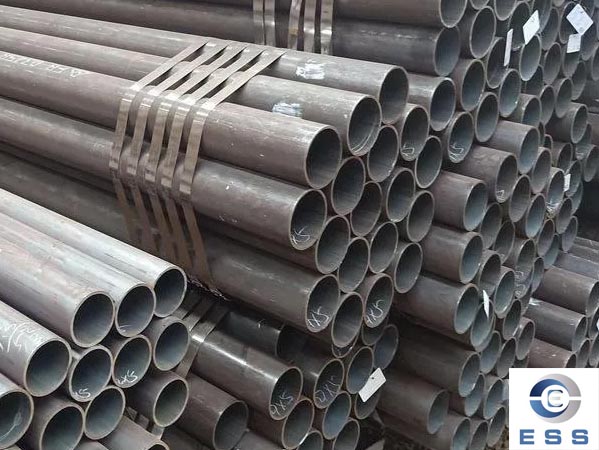Customizing Your Seamless Carbon Steel Pipe
Seamless carbon steel pipes are widely used in various industries due to their exceptional strength, durability, and resistance to corrosion. However, to maximize their potential, customization is often required to meet specific project requirements. In this article, we will explore the process of customizing
seamless steel pipes, including material selection, size and shape modifications, surface treatments, and additional features. Whether you're involved in construction, manufacturing, or engineering, this comprehensive guide will provide valuable insights into customizing your seamless carbon steel pipes effectively.

Material Selection
The first step in customizing a seamless carbon steel pipe is selecting the appropriate material grade. Carbon steel pipes come in various grades, each with its unique properties and suitability for specific applications. The choice of material grade depends on factors such as the intended use, operating conditions, and the presence of corrosive elements. Common material grades for seamless carbon steel pipes include ASTM A106, ASTM A53, and API 5L. Consulting with a metallurgist or a steel supplier can help determine the most suitable material grade for your specific needs.
Size and Shape Modifications
Customizing the size and shape of a seamless carbon steel pipe allows it to fit seamlessly into a particular project or system. The modification process can involve cutting, bending, or reshaping the pipe. Depending on the complexity of the modifications, specialized tools such as pipe cutters, tube benders, or hydraulic presses may be required. It is essential to maintain the structural integrity of the pipe during size and shape modifications to ensure its performance and longevity.
Surface Treatments
Surface treatments play a crucial role in enhancing the performance and longevity of seamless carbon steel pipes. They can provide protection against corrosion, improve aesthetics, and ensure optimal functionality. Some common surface treatments for carbon steel pipes include:
a. Coatings: Applying protective coatings such as epoxy, polyethylene, or zinc can significantly enhance corrosion resistance. Coatings act as a barrier, preventing moisture and corrosive substances from reaching the pipe's surface.
b. Galvanization: Galvanizing involves coating the pipe with a layer of zinc through a hot-dip process. This treatment offers excellent protection against corrosion, making galvanized seamless carbon steel pipes ideal for outdoor and high-moisture environments.
c. Passivation: Passivation removes surface impurities and forms a protective layer on the pipe's surface. It enhances the pipe's resistance to corrosion and improves its cleanability.
d. Painting: Painting the pipe's surface provides an added layer of protection against corrosion while also allowing customization for aesthetic purposes. Proper surface preparation and the use of high-quality paint are crucial for achieving durable and long-lasting results.
Additional Features
Customization of seamless carbon steel pipes can also involve the incorporation of additional features or components to meet specific project requirements. These features may include:
a. Threads and Couplings: Adding threaded ends or couplings allows for easy connection and disconnection of pipes, simplifying installation and maintenance processes.
b. Flanges: Flanges are used to create connections between pipes, valves, or equipment. Customizing the flange type, size, and material can ensure compatibility and facilitate secure connections.
c. Fittings: Custom fittings, such as elbows, tees, or reducers, can be added to modify the pipe's direction, diameter, or branching, enabling it to adapt to complex piping systems.
d. Lining and Insulation: In some applications, seamless carbon steel pipes may require additional lining or insulation to protect against corrosion, temperature variations, or to meet specific industry standards.
Quality Control and Testing
Throughout the customization process, quality control and testing play a critical role in ensuring the reliability and performance of customized seamless carbon steel pipes. Non-destructive testing methods, such as ultrasonic testing or X-ray inspection, can be employed to detect any defects, cracks, or imperfections that may compromise the pipe's integrity. Additionally, pressure testing is often conducted to verify the pipe's strength and leak resistance.
Conclusion
Customizing seamless carbon steel pipes allows you to tailor them to the unique requirements of your project, ensuring optimal performance and longevity. From material selection to size modifications, surface treatments, and the incorporation of additional features, the customization process requires careful consideration and adherence to industry standards. By following the guidelines outlined in this comprehensive guide, you can confidently navigate the process of customizing your seamless carbon steel pipes, ultimately enhancing their functionality and meeting your project's specific needs.













 Eastern Steel Manufacturing Co.,Ltd not only improve product production and sales services, but also provide additional value-added services. As long as you need, we can complete your specific needs together.
Eastern Steel Manufacturing Co.,Ltd not only improve product production and sales services, but also provide additional value-added services. As long as you need, we can complete your specific needs together.










